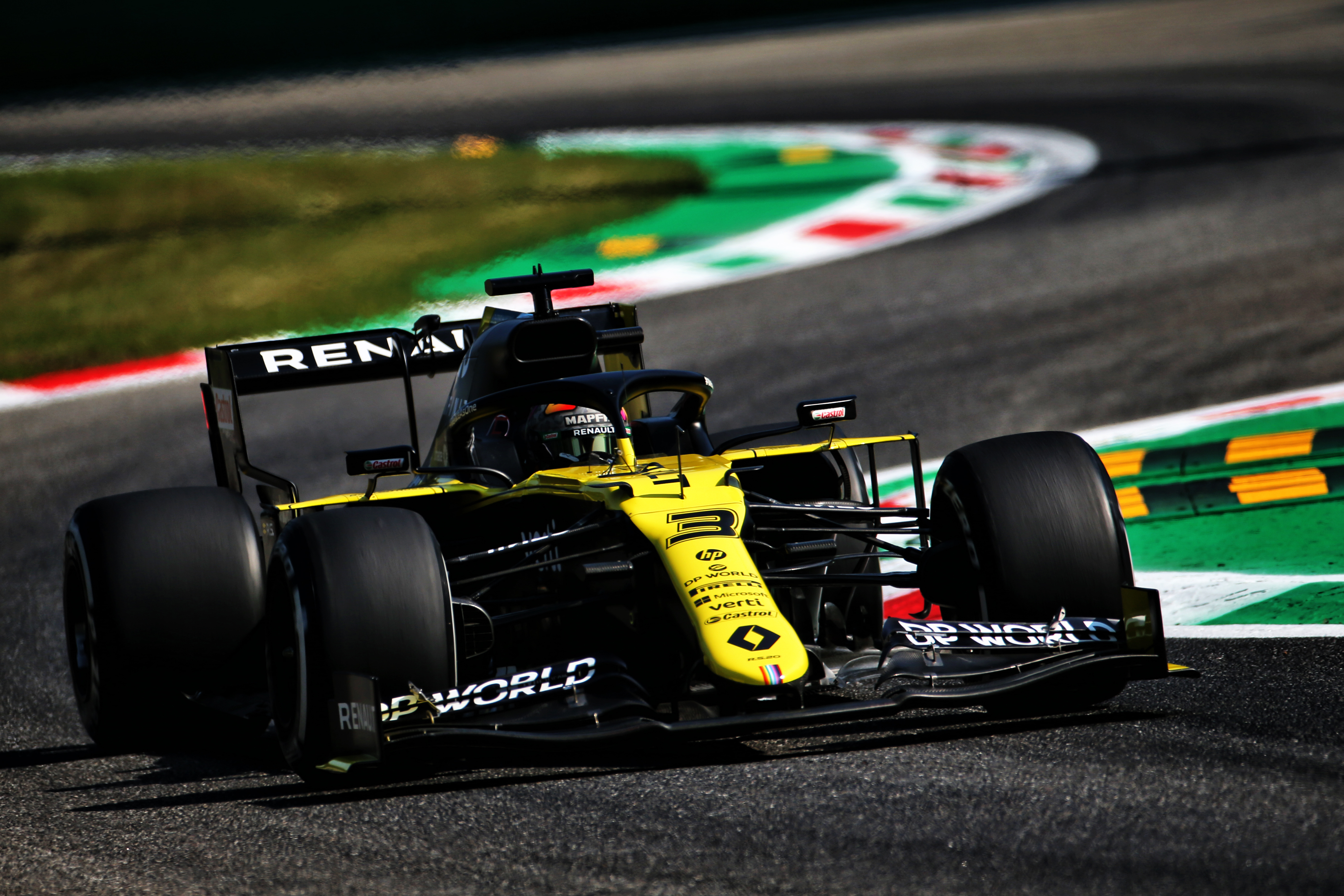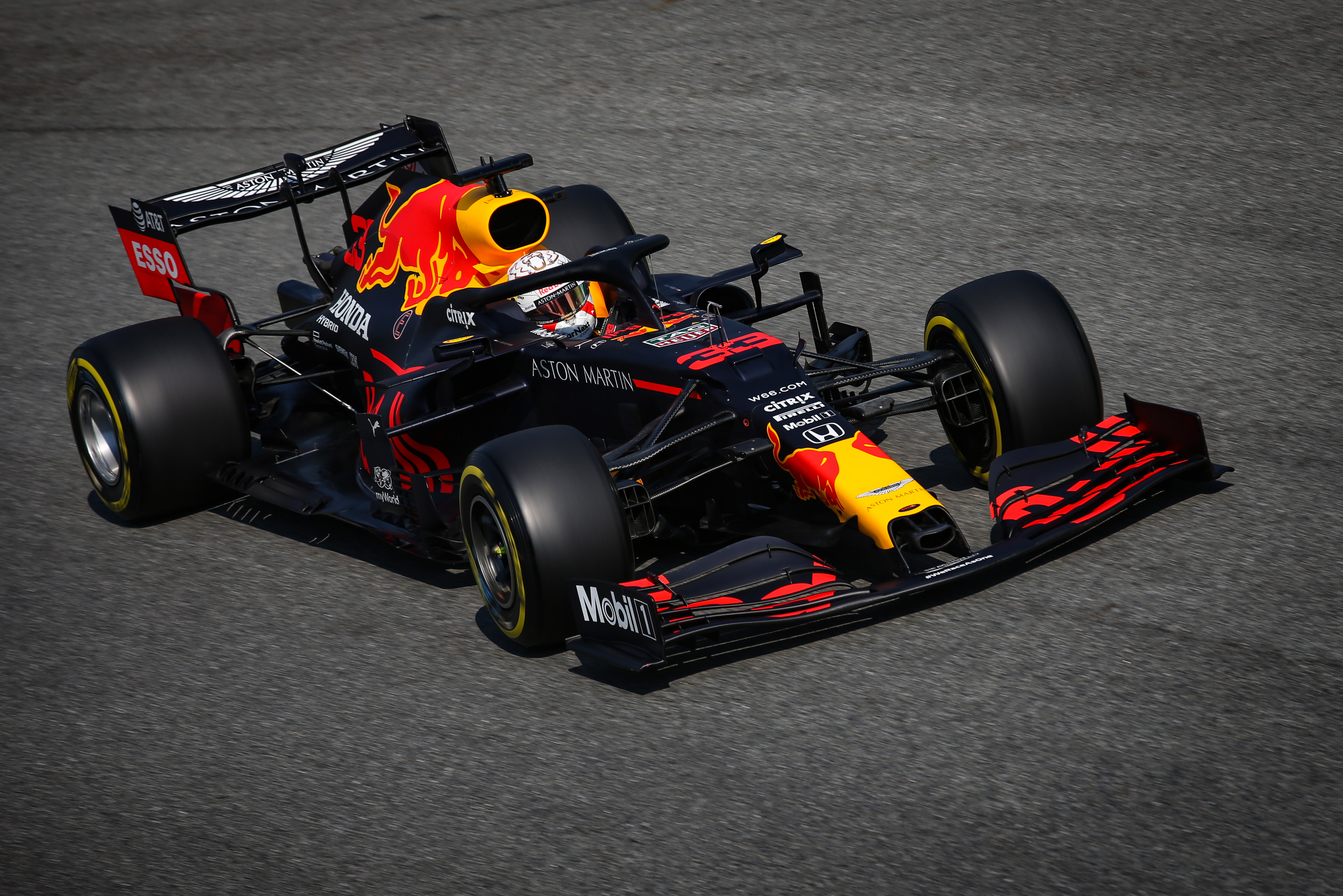The FIA’s new way of policing track limits at Monza’s Parabolica corner directly resulted in the deletion of 45 laps in Friday practice at the Italian Grand Prix.
Monza’s Rettifilo and Roggia chicanes were previously the subject of the FIA’s attention regarding track limits, specifying the way in which drivers must use the run-off if they miss the corner.
But after Friday practice last year the governing body stated that any driver going four wheels off the track at the Parabolica would have that lap and the next one deleted.
That was manually monitored last year but the process has been reinforced for 2020, and Parabolica is now automatically monitored by timing loops.
Across FP1 and FP2 on Friday, 45 lap times were deleted including three drivers’ personal bests in FP2.
Daniel Ricciardo should have ended the session third-fastest for Renault, but was 15th. Red Bull’s Alex Albon was 14th instead of 11th, and Romain Grosjean 18th for Haas instead of 14th.

Albon and his Red Bull team-mate Max Verstappen offended thrice and twice at Parabolica respectively, but played it down and said drivers were likely to get it under control for qualifying.
Verstappen said it was a matter of “just trying to find the limits, sometimes when you see you’re having a moment you just let it run wide, in practice it doesn’t really matter”.
Such a relaxed attitude to one of F1’s most famous corners, and traditionally one of Monza’s most challenging, will not go down well with those who believe Parabolica has been ruined in recent years.
The desire for punishment for exceeding track limits is understandable but the FIA’s argument is that the punishment doesn’t have to be a big crash
The run-off at the Parabolica and the new policing method are fundamentally separate issues but they are intrinsically linked. You can’t have the second issue without the first.
The gravel trap on the exit of Parabolica was slashed by around a third back in 2014, which at the time FIA race director Charlie Whiting said was in the interest of safety and was “a price both the drivers and I believe is worth paying”.
It has become an increasingly common feature for years and until a better compromise is found and implemented by the FIA, that is the reality for F1 and other top-line championships.

The desire for punishment for exceeding track limits is understandable but the FIA’s argument is that the punishment doesn’t have to be a big crash. Which is what a high-speed off will result in. And will still result in, because there is a gravel trap and a tyre barrier to hit on the outside of the corner beyond the run-off. So if someone has a proper spin they are going to lose out badly.
The lingering issue, which is separate from one of ‘how track limits are policed’ is that drivers for a few years have been able to easily go over the limit to find the limit, rather than build-up to it.
But in isolation, a bombardment of deleted lap times has nothing to do with this, the reduction of the majesty of Parabolica. If anything, it’s the opposite. It’s underlined how difficult the corner is to get right and reintroduced a punishment if it’s got wrong.
Massive run-off areas that let drivers get away with mistakes might not be perfect but at least there’s a cost. On Friday those track limits were the difference between Ricciardo being P3 and P15, and between Grosjean finishing in a Q2-worthy position (if it was qualifying) and being knocked out again in Q1.
Yes, the ultimate price to pay isn’t as severe. But the lap time doesn’t count and neither does the next one, so drivers are being punished where it matters.
In the world that’s been created, that’s about as good a compromise as F1’s likely to get.


